Understanding Intel Optane Memory Mode: A Deep Dive
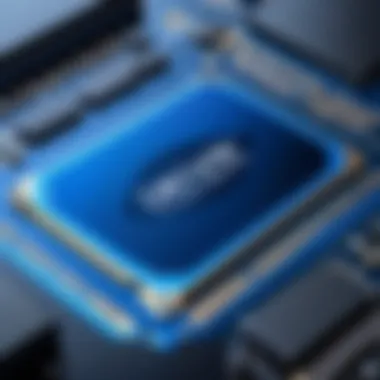
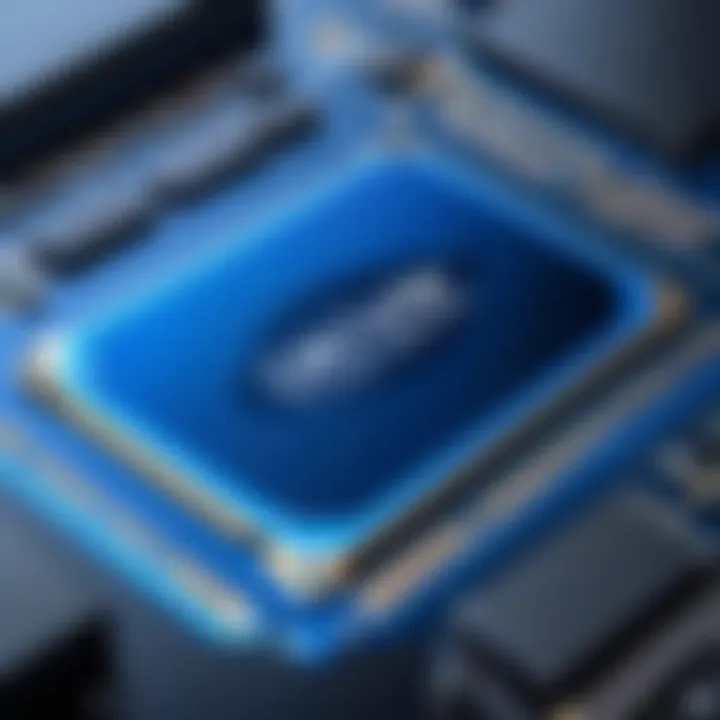
Intro
Intel Optane Memory Mode represents a significant advancement in storage technology. This section sets the stage for understanding how it integrates with traditional data storage solutions. Intel Optane enhances performance by utilizing non-volatile memory. This offers a different approach than conventional SSDs and HDDs.
The primary function of Optane Memory is to speed up data access through caching frequently used information. This leads to quicker boot times and overall snappier system performance. The integration works seamlessly with various operating systems, and this makes it attractive for a range of users, from professionals to tech enthusiasts.
Explaining the architectural layout, Intel Optane Memory uses 3D XPoint technology. This separates it from traditional NAND flash memory. The result is a device that offers lower latency and higher endurance compared to conventional storage solutions.
Understanding Storage Concepts
To grasp the importance of Intel Optane, familiarize yourself with essential storage concepts.
Key Terminology and Definitions in Storage
- Non-volatile memory: Retains data even without power.
- Caching: Storing frequently accessed data for rapid retrieval.
- I/O Operations: Refers to reading and writing data to and from storage.
As you navigate the landscape of modern computing, these terms help decode the complexity of storage technologies.
Overview of Important Storage Technologies
Both SSD and HDD are well-known traditional storage methods. SSDs involve NAND flash memory. They are faster but typically come at a higher price. HDDs, on the other hand, provide larger storage capacity at a lower cost but lack the speed of SSDs. Intel Optane sits in between these technologies, offering both speed and efficiency.
Moreover, the concept of storage tiers comes into play. By using Optane as a cache, users can create a tiered storage system that maximizes performance and cost-effectiveness.
"Intel Optane Memory represents a bridge between traditional SSDs and next-gen storage solutions, enhancing user experiences with faster access to data."
Best Practices for Storage and Optimization
To maximize the benefits of Intel Optane Memory, consider the following:
- Use Optane in conjunction with larger SATA SSD or HDD for optimal results.
- Regularly update BIOS and firmware to ensure compatibility and performance.
- Be mindful of the software used to manage cache settings.
This approach can boost performance and extend the lifecycle of storage devices.
Industry Trends and Updates
The storage industry is rapidly evolving. Current trends include:
- Increasing adoption of NVMe (Non-Volatile Memory Express) for even faster data access.
- Growing emphasis on data management and security measures to protect against vulnerabilities.
- Shift towards cloud storage solutions, complemented by local caching systems like Intel Optane.
Keeping informed of these trends ensures that you harness the full potential of the tools available today.
Finale
Intel Optane Memory Mode plays a vital role in modern computing. As data demands increase, understanding how it fits into your storage strategy is essential. By integrating Optane into your setup, you position yourself to take advantage of unparalleled performance improvements.
Prelude to Intel Optane Memory Mode
Intel Optane Memory Mode serves as a vital topic in discussions concerning modern computing and data storage. As technology progresses, there is an increasing need for systems that not only perform at high speeds but also manage data efficiently. Intel Optane Memory Mode stands out as an innovative solution that meets these needs. This section will detail its importance by exploring its functionality, benefits, and considerations for implementation.
Overview of Intel Optane Technology
Intel Optane Technology is based on a unique storage solution that combines the speed of memory with the storage capacity of traditional drives. Utilizing 3D XPoint technology, Optane provides fast data access and lower latency compared to standard NAND SSDs. This technology bridges the gap between volatile memory like DRAM and storage, creating a seamless workflow for applications.
Benefits of Intel Optane Technology include:
- Reduced Latency: It allows for faster retrieval of frequently used data.
- Increased Endurance: 3D XPoint has a higher endurance level compared to NAND, making it more durable for heavy workloads.
- Enhanced System Responsiveness: The quick data access results in snappier performance in everyday tasks.
The Purpose of Memory Mode
Memory Mode acts as a specific configuration within Intel Optane's technology framework. Its primary purpose is to optimize system memory usage, effectively turning Optane memory into a volatile memory cache that works alongside traditional DRAM.


Using Memory Mode, users can significantly improve boot time and overall application load speeds. It also enables systems to handle more data-intensive tasks without requiring extensive amounts of physical RAM. This is especially beneficial for users engaging in demanding applications, such as gaming or data analysis.
In summary, Intel Optane Memory Mode is more than just an enhancement; it optimizes entire computing experiences through innovative technology and efficient data management.
Technical Foundations of Intel Optane Memory
The discussion of Intel Optane Memory cannot proceed without laying a solid grounding in its technical foundations. Understanding this technology offers insight into its operational intricacies and its place in today's computing architecture. Intel Optane Memory is fundamentally built upon 3D XPoint technology, which represents a significant advancement over traditional memory and storage solutions.
3D XPoint Technology Explained
3D XPoint technology is a revolutionary type of non-volatile memory that leverages unique materials and architecture. It operates differently than standard NAND flash memory found in SSDs. While NAND relies on floating-gate transistors, 3D XPoint employs a crosspoint architecture that allows individual memory cells to be accessed independently. This leads to distinct advantages, particularly in speed and durability.
The key characteristics of 3D XPoint technology include:
- Speed: It significantly outperforms NAND flash in terms of latency and throughput. 3D XPoint can access data in a fraction of the time required by traditional storage devices, making it suitable for high-performance applications.
- Endurance: 3D XPoint technology has a longer lifespan than typical SSDs, allowing for a higher number of write cycles without degradation.
- Capacity Scalability: The ability to stack memory vertically allows for higher density, leading to the possibility of larger storage volumes in a smaller footprint.
These properties make 3D XPoint foundational to Intel Optane Memory's capability to enhance system performance and responsiveness.
Differences Between RAM and Optane Memory
Although Intel Optane Memory shares similarities with RAM, they serve different purposes and are designed for different use cases. The following points outline the main distinctions:
- Volatility: RAM is volatile memory, meaning it loses data once power is turned off. In contrast, Optane Memory retains information even when the system is powered down, embodying a crucial trait of non-volatile memory.
- Speed: While RAM is generally faster than Optane Memory, the latter provides a compelling advantage when used alongside slower storage devices like HDDs or even standard SSDs. In many cases, Optane Memory accelerates data retrieval times significantly, narrowing the performance gap.
- Cost and Capacity: Typically, RAM is more expensive per gigabyte than Optane Memory. While RAM must be equipped in sufficient volume for optimum performance, Optane can act as a bridge between slow storage and system memory, making it a cost-efficient solution for enhancing overall system performance.
"Intel Optane Memory provides a unique blend of memory-like speed with storage-like persistence, making it a versatile addition to modern computing environments."
In summary, the technical foundations of Intel Optane Memory encompass its underpinnings in 3D XPoint technology, with vital differences from traditional RAM leading to a unique position in the memory landscape. As users delve into the specifics of performance optimization, understanding these elements is essential for making informed choices in memory and storage solutions.
Advantages of Intel Optane Memory Mode
The advantages of Intel Optane Memory Mode are significant. These benefits influence not just the performance of individual systems but also the overall efficiency and usability in various computing environments. Understanding these advantages allows users to make informed decisions when considering enhancements to their setups. The following sections will cover three main benefits in detail: improved system boot times, enhanced application load speeds, and cost-efficiency in storage solutions.
Improved System Boot Times
One of the most noticeable advantages of using Intel Optane Memory Mode is the improvement in boot times. A traditional hard disk drive (HDD) operates at slower speeds, causing extended boot periods that can be frustrating for users. In contrast, Intel Optane Memory acts as a bridge between the high-speed data of RAM and the slower speeds of an HDD.
Users have reported boot times reduced by as much as 50% when utilizing this technology. This enhancement is crucial for anyone who values efficiency and productivity in their workflows.
The key factor here is the caching capability of Intel Optane Memory. By storing frequently accessed data, the system can load essential files and applications faster, significantly diminishing the wait time whenever you start your computer.
Enhanced Application Load Speeds
In addition to shorter boot times, Intel Optane Memory Mode provides a noticeable boost in application load speeds. This capability is especially beneficial for users who rely on demanding applications, such as data-intensive software or gaming.
With Intel Optane, applications that are opened regularly can be cached. This means that data are retrieved from the fast memory instead of slower storage drives like HDDs. Consequently, users will experience quicker response times and a smoother workflow with reduced lag.
Research shows that applications can load up to 70% faster compared to conventional storage systems. This improvement is vital in a professional environment where time efficiency is key, emphasizing the practical advantages of adopting Intel Optane Memory.
Cost-efficiency in Storage Solutions
Lastly, another important discussion point is the cost-efficiency of storage solutions when utilizing Intel Optane Memory Mode. While the initial investment may seem considerable, the long-term savings often offset this cost.
Many users opt for a combination of Intel Optane Memory and slower HDDs, reducing the need for entirely upgrading to more expensive solid-state drives (SSDs). Since Optane can improve performance without changing the entire storage system, it allows users to maximize their hardware investments.
In summary, the advantages of Intel Optane Memory Mode are compelling. Improvements in boot times and application loads can significantly enhance user experience and productivity.
"Adopting Intel Optane Memory can result in a performance boost that users will appreciate every day."
By being cost-effective, it permits users to get the maximum value from their existing systems while still enjoying the latest technology functionalities.
Implementation of Intel Optane in Systems
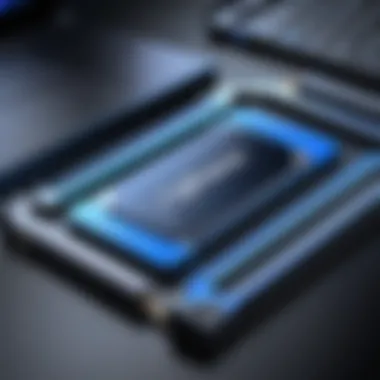

Implementing Intel Optane Memory in systems brings significant advantages, impacting both performance and user experience. Understanding how to effectively integrate this technology is crucial for individuals who aim to enhance their computing setup, whether for professional purposes or personal use. The implementation phase involves several elements that must be considered, including system requirements, installation procedures, and post-installation configurations.
System Requirements for Intel Optane
To utilize Intel Optane Memory, certain hardware requirements must be met. Key components include:
- Compatible CPU: Systems need Intel processors from the 6th generation or newer, as older CPUs do not support Optane technology. Models like the Intel Core i5, i7, or i9 are recommended.
- Supported Chipset: A compatible chipset, such as Intel 200 series or newer, is necessary for proper functioning. Check your motherboard specifications to ensure compatibility.
- M.2 Slot: Optane Memory devices are typically installed in M.2 slots. Ensure your motherboard has an available slot that supports 80 mm modules for optimal performance.
- SATA Storage: A traditional SATA hard drive or SSD is required for Optane to function correctly. Intel Optane Memory acts as a cache for the slower storage, accelerating read and write speeds.
- BIOS Update: Sometimes, updating the BIOS is needed to ensure compatibility with newer technologies. This step should not be overlooked as it can directly affect performance.
Step-by-Step Installation Process
The installation process for Intel Optane Memory involves several straightforward steps. Each one is critical to ensure the setup goes smoothly. Here is a detailed guide:
- Prepare Your Hardware: Before starting, make sure all components are compatible as per the previous section. Gather necessary tools, such as a screwdriver.
- Install Intel Optane Module: Insert the Intel Optane Memory module into the M.2 slot. Align the module with the slot and gently press it down before securing it with the provided screw.
- Connect SATA Storage: If SATA storage is not already connected, ensure it is plugged into the relevant ports on the motherboard. This connection is essential for Optane to perform its caching functions.
- Boot into BIOS: Power on the system and enter the BIOS setup. This is usually done by pressing a key like F2 or Delete during the boot process. In the BIOS, check that the Intel Optane module is recognized.
- Enable Intel Optane Memory: Find the section related to Intel Optane and enable it. This typically involves toggling the feature on and saving changes before restarting the system.
- Install Intel Optane Software: Once the operating system loads, download and install the Intel Optane Memory software from the official Intel website. This software is vital for managing the Optane configuration.
- Configure Optane Memory: Open the installed software and follow the prompts to configure the memory as a cache for your primary storage. Make sure to select the correct SATA drive during this process.
- Finalize Installation: After configuring, restart your system. You should notice increased speeds with applications loading faster and more efficient data retrieval.
Implementing Intel Optane Memory not only boosts speed but also brings a cost-effective solution for improving overall system performance.
Through a proper understanding of these requirements and the installation steps, users can effectively set up Intel Optane Memory and take full advantage of its capabilities. Ensuring alignment with system specifications and following through with installation processes paves the way for significant performance improvements.
Performance Benchmarks
Performance benchmarks act as a critical component of any technical analysis. They provide quantifiable data that reflects how well a technology performs under various scenarios. For Intel Optane Memory, benchmarks specifically reveal its advantages and limitations when compared to traditional storage options. Understanding these metrics helps professionals make informed decisions about hardware choices for their systems.
System performance can be gauged through a variety of measurements. These include read/write speeds, latency times, and overall responsiveness under different workloads. The significance of benchmarks lies not just in the numbers, but in how they translate to real-world applications. Key benchmarks often relate to boot times, application launch speeds, and file transfer rates. By analyzing these elements, users can ascertain whether Intel Optane Memory delivers the promised improvements in user experience and overall efficiency.
Comparative Analysis with SSDs and HDDs
When comparing Intel Optane Memory to Solid State Drives (SSDs) and Hard Disk Drives (HDDs), it is crucial to consider several factors. Optane Memory, utilizing 3D XPoint technology, claims to combine advantages of both types of storage while eliminating some common drawbacks.
- Speed: Intel Optane typically offers superior speed to both HDDs and most SSDs. This is particularly true for random access tasks where traditional SSDs may falter.
- Latency: The latency of Optane Memory is significantly lower than that of HDDs and often lower than that of SSDs. This reduction in latency can translate to noticeable improvements in tasks with frequent read/write operations.
- Endurance: Unlike NAND flash used in SSDs, 3D XPoint memory has higher endurance. This means it can handle more write cycles, which is advantageous for users who perform extensive data writing tasks.
These aspects culminate in a more responsive system, especially for workloads that require frequent data access. However, users should also examine the price to performance ratio before making a shift from SSDs or HDDs.
Real-world Application Performance Tests
Real-world performance tests allow potential users to see how Intel Optane functions in typical usage scenarios. Often, synthetic benchmarks may portray an idealized performance that does not reflect everyday tasks. Real-world tests involve using Optane Memory in various scenarios, such as:
- Boot Time Experiments: Measuring how quickly a system starts up.
- Application Launch Tests: Evaluating the speed of launching commonly used software.
- File Transfer Speed Tests: Assessing how fast files can be moved across storage devices.
These tests usually show that Intel Optane Memory performs exceptionally well in environments requiring rapid data access. In situations where speed is essential, such as gaming or professional content creation, users may experience a noticeable enhancement in performance.
"Performance benchmarks not only reveal metrics but also demonstrate the potential of technologies like Intel Optane Memory in real-world conditions."
In summary, benchmark analysis plays a vital role in discerning the capability of Intel Optane Memory in contrast with other storage options. It equips IT professionals and enthusiasts with the data needed to evaluate whether embracing this technology aligns with their performance needs.
Use Cases for Intel Optane Memory Mode
Intel Optane Memory Mode represents a significant advancement in how data is processed and stored. Understanding its use cases is crucial for IT professionals and tech enthusiasts looking to optimize system performance. This section will delve into specific scenarios where Optane’s unique capabilities shine, highlighting both its benefits and considerations.
Ideal Scenarios for Optane Deployment
Intel Optane Memory is particularly effective in situations that involve demanding applications and workflows. Some ideal scenarios include:
- Gaming Environments: Gamers often require quick load times. Optane supports faster data retrieval, enhancing both loading speeds and overall gameplay experience.
- Content Creation: Tasks like video editing, graphic design, and 3D rendering can be resource-intensive. In these cases, Optane's ability to cache frequently used data translates into smoother operations and quicker access.
- Data-Intensive Applications: Enterprise applications that rely on databases, data analytics, or large datasets benefit significantly from Optane's speed. Processes that involve heavy I/O operations see notable improvements in performance.
- Virtualization: In environments running multiple virtual machines, the efficiency of data access can dramatically impact overall system performance. Optane reduces latency, allowing for more seamless multitasking among VMs.
These scenarios illustrate the versatility of Intel Optane Memory. By integrating this technology, organizations can address the specific needs of their workloads effectively.
Case Studies from the Field
To provide a more tangible understanding of how Intel Optane Memory operates in practice, examining real-world applications is beneficial. Several organizations have successfully implemented Intel Optane to augment their system capabilities.
Case Study 1: A leading video production company incorporated Intel Optane to assist with their editing workflow. By using Optane, they reported a 50% reduction in the time taken to render high-quality videos. This efficiency enabled the team to increase output without compromising quality.
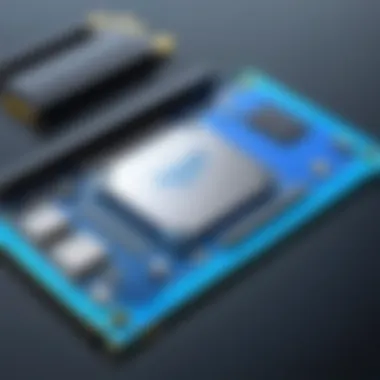
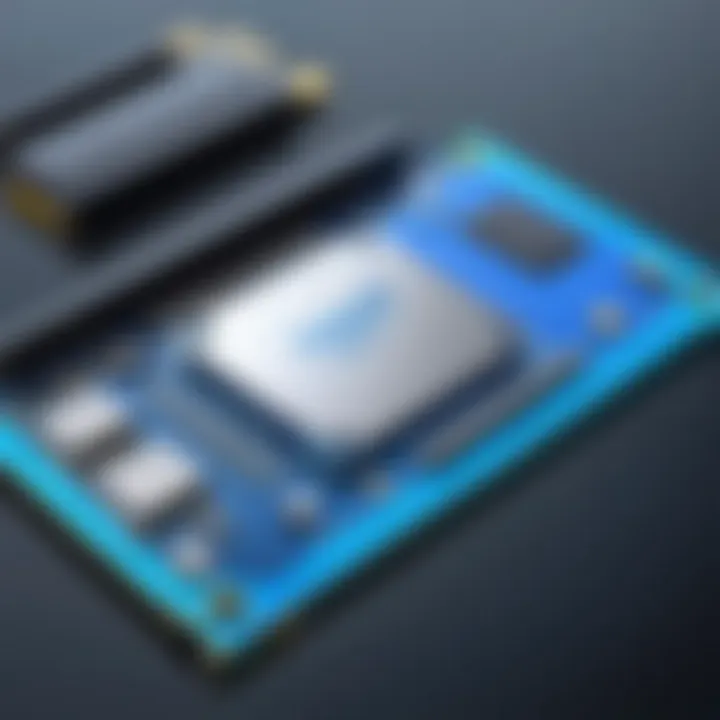
Case Study 2: An enterprise-level data analytics firm adopted Intel Optane for their extensive database applications. The result was a marked improvement in query response times. The firm noted a 30% increase in data processing speeds, demonstrating how Optane effectively supports their data-driven needs.
Case Study 3: A small gaming studio seeking to optimize their game development processes found success with Intel Optane. They experienced faster load times during game testing, which helped streamline their development cycle, ultimately leading to a quicker release schedule.
These case studies underscore the adaptability and competence of Intel Optane Memory in various sectors. By understanding its unique applications, potential users can evaluate its fit for their operational requirements.
Challenges and Limitations of Intel Optane Memory
Intel Optane Memory offers unique features and capabilities, yet it does not come without its share of challenges. Understanding these limitations is crucial. It provides context for its best use cases and helps to manage expectations. This section will focus on two major challenges: compatibility issues with older systems and performance limitations in specific workloads.
Compatibility Issues with Older Systems
One of the most significant obstacles to implementing Intel Optane Memory is its compatibility with existing systems. Not all motherboards support Intel Optane technology. Usually, systems utilizing older chipset designs are unable to take advantage of its benefits. Avoiding these pitfalls during planning and integration is crucial for maximizing the advantages of Optane Memory.
The following points highlight critical considerations:
- Chipset Limitations: Intel Optane Memory requires specific chipsets, primarily 7th generation Intel Core processors or later. Older chipsets do not support the memory types, making upgrades difficult.
- Motherboard Requirements: The motherboard needs to have a dedicated M.2 slot. Users should confirm that their hardware supports the format before making a purchase.
- Firmware Updates: Sometimes, older systems may require BIOS updates to function correctly with Intel Optane. Regularly checking for updates can ensure optimal performance.
- Limited Use in Legacy Systems: Traditional systems configured with HDDs may not fully leverage the speed and capacity that Optane offers. In such environments, users might encounter bottlenecks that hinder performance improvements.
"Choosing hardware that supports Intel Optane Memory is vital for seeing the best results from this technology.
This leads to constraints in the technology's adoption, mainly for organizations and users still languishing in older setups.
Performance Limitations in Specific Workloads
While Intel Optane offers remarkable speed advantages, it does have its limitations depending on the workload. Understanding where it excels and where it does not can prevent misallocation of resources.
The following areas showcase where Intel Optane may fall short:
- Sequential Read/Write Tasks: For tasks requiring high sequential storage speeds, traditional SSDs may outperform Optane for certain workloads. High-capacity SSDs often have optimized data paths that result in better performance under these conditions.
- Latency in Random I/O: Although Intel Optane excels in low-latency tasks against SATA SSDs, there are instances when extreme workloads can expose its limits. Heavy random read/write operations can lead to inconsistent performance in intensive scenarios, especially under heavy user loads.
- Cost vs. Benefit: Some users may find that the actual benefits do not justify the higher cost of investing in Intel Optane. For specific applications, opting for more traditional storage methods could provide a better balance between cost and required performance.
- Non-Optimal Utilization in Consumer Applications: Not all consumer applications require the speed offered by Intel Optane. In general computing tasks, users might find a standard SSD or HDD to be sufficient for their needs.
In summary, a clear understanding of these challenges and limitations can pave the way for informed decisions when considering Intel Optane Memory. Users need to assess whether the technology suits their specific needs and environments.
Future of Intel Optane Technology
The future of Intel Optane Technology stands at a crossroads shaped by the rapid evolution of data storage needs and advanced computational requirements. This section delves into the emerging trends and strategic vision surrounding Intel Optane's development, clarifying its relevance in the landscape of storage solutions. The topic not only highlights technological advancements but also emphasizes the critical role Intel Optane can play in enhancing overall system performance.
Emerging Trends in Storage Technologies
Storage technology is continuously evolving, driven by the relentless demand for faster and more efficient data management solutions. In this context, key trends are emerging:
- Increased Adoption of NVMe Interfaces: Non-Volatile Memory Express (NVMe) offers a streamlined pathway for SSDs, resulting in lower latency and improved throughput. Intel Optane is well-positioned to leverage NVMe to maximize data transfer rates.
- Shift Towards Hybrid Storage Solutions: The blend of traditional hard disk drives (HDD) and advanced storage like Intel Optane Memory caters to users seeking both cost-effectiveness and top-tier performance. This hybrid approach allows for data prioritization, where frequently accessed files are stored on faster media.
- Growing Importance of Data Integrity and Durability: As systems demand quicker access, durability becomes crucial. Intel Optane’s unique structure provides a longer lifespan compared to conventional NAND flash storage, making it a reliable choice for data centers.
- Artificial Intelligence and Machine Learning Integration: With more organizations adopting AI, the need for rapid data retrieval is critical. Intel Optane can support AI workloads by minimizing latency and speeding up data access in real time.
This convergence of trends indicates that Intel Optane will continue to play a pivotal role in shaping future storage solutions, addressing the increasing need for speed, reliability, and efficiency in both commercial and personal computing.
Intel's Vision for Optane's Evolution
Intel has articulated a clear vision regarding the evolution of Optane technology. Understanding their perspective requires looking into several key aspects:
- Continued Innovation in 3D XPoint Technology: Intel aims to refine the substrate technology behind Optane. Enhancements will focus on improving speed and reducing costs, ensuring that Optane remains competitive against newer technologies.
- Increased Market Penetration: By broadening partnerships and integrating Optane into more consumer products, Intel seeks to boost usage across multiple sectors. This could lead to more comprehensive solutions that emphasize the importance of speed, particularly in data-heavy industries.
- Focus on Edge Computing: As data processing moves closer to the source, Intel recognizes the necessity of swift data access in edge computing environments. Optane’s architecture is geared to deliver the required performance in scenarios where milliseconds matter.
- Sustainability and Environmental Considerations: Intel is incorporating sustainability into its roadmap. Future iterations of Optane will emphasize energy efficiency, aligning with global trends toward greener technology.
Intel's commitment to continual development in these areas suggests that Optane is more than just a transient solution. It represents a strategic direction towards a future where speed, reliability, and efficiency define data storage and utilization. The clear investment in research and development signals a bright path ahead for Intel Optane technology, ensuring it remains relevant in an ever-evolving tech landscape.
"As we transition into an era defined by speed and efficiency, technologies like Intel Optane become not just valuable but essential."
Overall, the future of Intel Optane Technology will likely be shaped by innovation, adaptability, and an unwavering focus on enhancing user experience across all facets of computing.
Epilogue
In this conclusion, we encapsulate the essence of Intel Optane Memory Mode and its significance in contemporary computing landscapes. The article provides a thorough exploration of Intel Optane's architecture, setup, advantages, and challenges. Emphasis is placed on its potential to redefine data storage paradigms.
Summary of Key Insights
Intel Optane Memory Mode leverages unique 3D XPoint technology, bridging the gap between DRAM and traditional storage. Key points include:
- Architectural Advantages: The non-volatile nature of Optane memory allows for faster data retrieval and improved system response times compared to conventional HDDs and standard SSDs.
- Performance Enhancements: Particularly in systems with limited RAM, Intel Optane can significantly boost application load times and overall system efficiency.
- Use Case Relevance: The memory mode is particularly suited for workloads with frequent data access demands, making it ideal for gaming, content creation, and data analysis scenarios.
- Challenges Identified: Despite its advantages, compatibility issues with older systems and performance limitations in specific workloads remain crucial considerations for potential users.
Final Thoughts on Optane Memory Mode
Continued innovation in storage technologies will likely further enhance Intel's Optane offerings. For those interested in staying ahead in tech and optimizing their systems, understanding and implementing Intel Optane Memory Mode could be a key strategic advantage.



